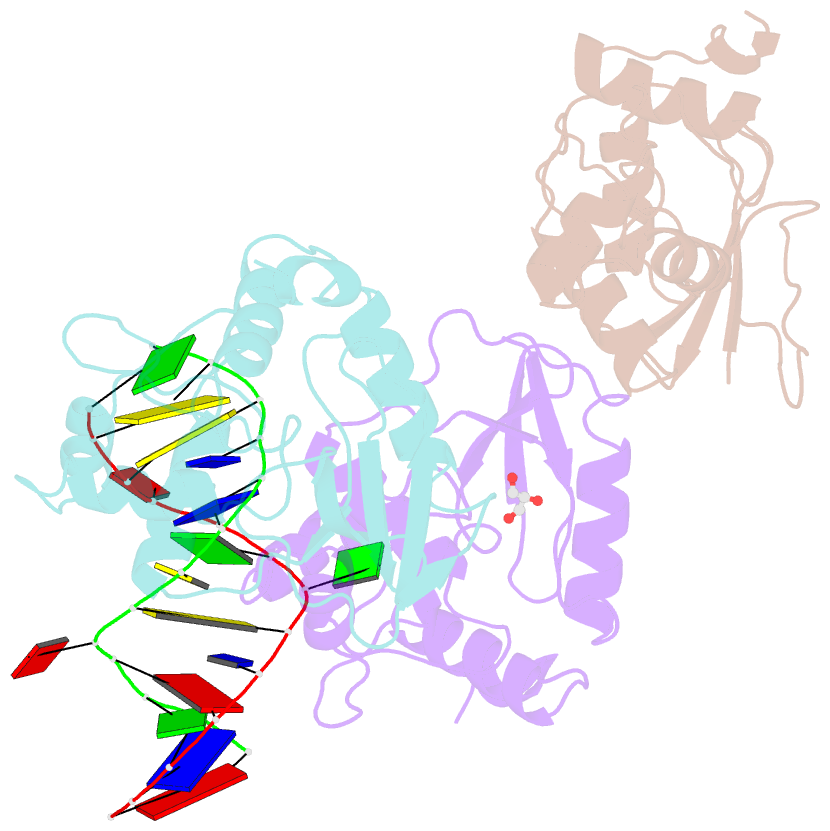Summary information and primary citation
- PDB-id
- 4wx9; SNAP-derived features in text and JSON formats;
DNAproDB
- Class
- transferase
- Method
- X-ray (3.0 Å)
- Summary
- Crystal structure of mycobacterium tuberculosis ogt in complex with DNA
- Reference
- Miggiano R, Perugino G, Ciaramella M, Serpe M, Rejman D, Pav O, Pohl R, Garavaglia S, Lahiri S, Rizzi M, Rossi F (2016): "Crystal structure of Mycobacterium tuberculosis O6-methylguanine-DNA methyltransferase protein clusters assembled on to damaged DNA." Biochem.J., 473, 123-133. doi: 10.1042/BJ20150833.
- Abstract
- Mycobacterium tuberculosis O(6)-methylguanine-DNA methyltransferase (MtOGT) contributes to protect the bacterial GC-rich genome against the pro-mutagenic potential of O(6)-methylated guanine in DNA. Several strains of M. tuberculosis found worldwide encode a point-mutated O(6)-methylguanine-DNA methyltransferase (OGT) variant (MtOGT-R37L), which displays an arginine-to-leucine substitution at position 37 of the poorly functionally characterized N-terminal domain of the protein. Although the impact of this mutation on the MtOGT activity has not yet been proved in vivo, we previously demonstrated that a recombinant MtOGT-R37L variant performs a suboptimal alkylated-DNA repair in vitro, suggesting a direct role for the Arg(37)-bearing region in catalysis. The crystal structure of MtOGT complexed with modified DNA solved in the present study reveals details of the protein-protein and protein-DNA interactions occurring during alkylated-DNA binding, and the protein capability also to host unmodified bases inside the active site, in a fully extrahelical conformation. Our data provide the first experimental picture at the atomic level of a possible mode of assembling three adjacent MtOGT monomers on the same monoalkylated dsDNA molecule, and disclose the conformational flexibility of discrete regions of MtOGT, including the Arg(37)-bearing random coil. This peculiar structural plasticity of MtOGT could be instrumental to proper protein clustering at damaged DNA sites, as well as to protein-DNA complexes disassembling on repair.





